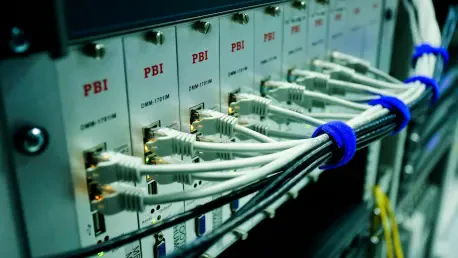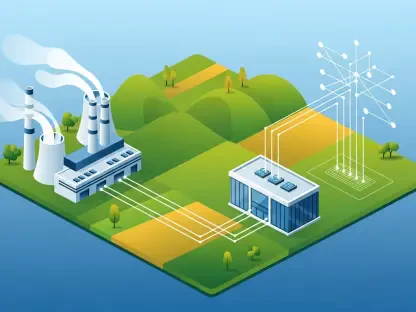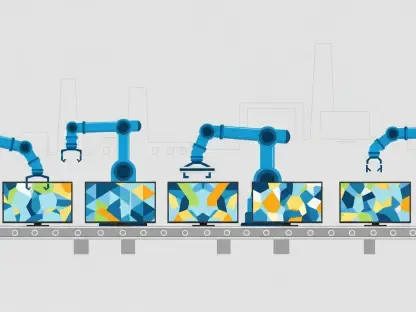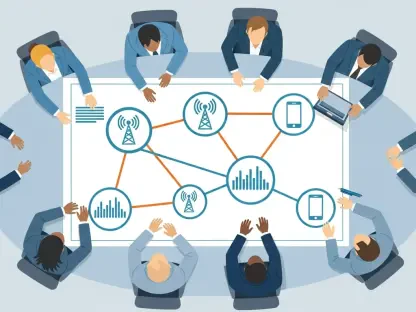In the age of digital transformation, equitable access to high-speed internet is no longer a luxury but a necessity. Yet many communities find themselves on the wrong side of the digital divide. The rapid rollout and strategic expansion of fiber networks across the United States are pivotal in addressing this challenge, offering a vision of a future where internet accessibility is universal. Various companies have embarked on ambitious projects to extend their fiber optic networks, aiming for broader connectivity that allows residents in underserved regions to benefit from the same digital resources as those in well-connected urban areas.
Significant Financial Investments in Fiber Expansion
Strategic Company Investments
The fiber expansion wave is characterized by significant financial investments from companies eager to extend their network reach. For instance, Surf Internet is deploying a $25 million investment in Indiana, specifically targeting Muncie and Yorktown. Construction for these extensions commenced this year, with completion expected in phases over the next two years. Meanwhile, national giant Comcast has combined state support with its own capital to further its reach in Indiana, channeling $9.4 million from the state’s broadband grant program and adding $45 million of its own funds to bolster the initiative. Such investments are not just isolated commitments; they signify a broader corporate trend toward bridging digital gaps.
Public and Private Collaboration
Efforts in Rhode Island exemplify the collaborative spirit between the private and public sectors in fiber expansions. GoNetspeed is setting into motion a $13 million fiber network expansion in Newport, supported by Rhode Island’s Capital Projects Fund. This public-private partnership format is also mirrored in Washington State, where Lightcurve has secured $3.3 million from a public works board to drive fiber services into Kittitas County. These synergies between private firms and public funds reveal a growing recognition of the need for shared responsibilities in technology-driven societal advancement.
Geographic Reach and Network Expansion
Growing Fiber Footprints
The strategy to expand geographical footprints is not just about laying cables but encompasses increasing market presence and competitiveness. GoNetspeed’s move into Rhode Island marks its presence in its tenth state, illustrating the scale and ambition of such expansions. Similarly, Gateway Fiber’s extension into eastern North Dakota from Minneapolis indicates a methodical approach to covering entire regions, facilitating connectivity in the Upper Midwest. This ambition stems from a goal to enhance competitive advantage in a market increasingly valuing digital inclusivity as a key differentiator.
Regional Integration Strategies
Metronet’s operations also highlight a regional integration strategy that balances new urban market entry with ongoing expansions in existing locations. In Peoria, Arizona, Metronet is channeling $58.5 million to expand its reach, complementing efforts in places like Tulsa, Oklahoma. Such strategies are likely motivated by the promise of a more robust user base and improved service delivery in these complex urban environments. The Florida project by Wire 3 is another example of how a targeted and financially supported expansion can fortify a company’s standing within the evolving digital landscape.
Timelines and Projected Completion Dates
Phase-Based Approaches
The planned timelines of these expansions underscore the methodical approach undertaken by these companies to ensure successful deployments. Surf Internet plans to finalize its Indiana project by 2027, emphasizing a phased construction designed to maintain service standards. GoNetspeed anticipates that its Rhode Island project, starting this year, will connect its first batch of customers by spring 2026, with the entire expansion completed by the end of 2026. Such detailed scheduling highlights a commitment to minimizing disruptions while maximizing coverage growth efficiently.
Long-Term Commitment
The long-term nature of these projects reveals an industry committed to sustained growth through steady, well-planned expansion procedures. Companies are not relying solely on speedy deployment but are focusing on creating durable infrastructures meant to last. Each initiative denotes a long-lasting investment in community connectivity, promising substantial advances not only in internet speed and availability but also in the socio-economic upliftment associated with improved digital access.
Transformative Impact on Communities
Economic Opportunities
Beyond simply providing internet access, the fiber expansions bring forth a ripple of economic opportunities previously stifled by inadequate connectivity. These infrastructure projects enable small businesses to engage in e-commerce, students to access online education resources, and citizens to employ telehealth services, which can dramatically enhance quality of life. With companies investing in robust local networks, communities are better positioned to attract businesses, thereby stimulating job creation and regional economic growth.
Bridging Digital Inequality
In today’s digital age, equal access to high-speed internet isn’t just a luxury—it’s a basic necessity. However, many communities still find themselves lagging behind, separated by the digital divide. The swift deployment and strategic growth of fiber optic networks across the U.S. play a crucial role in tackling this disparity. These networks envision a future where internet access isn’t limited by geographic or socio-economic barriers. Numerous companies have launched ambitious initiatives to expand their fiber optic networks, striving for widespread connectivity. Their goal is to provide residents in underserved regions with the same digital tools and resources available in well-connected urban areas. As these projects progress, they promise to bridge gaps in access, empowering more people to participate fully in digital society. Through this expansion, the objective is to ensure that the educational, economic, and social benefits of high-speed internet are accessible to all, regardless of location.









